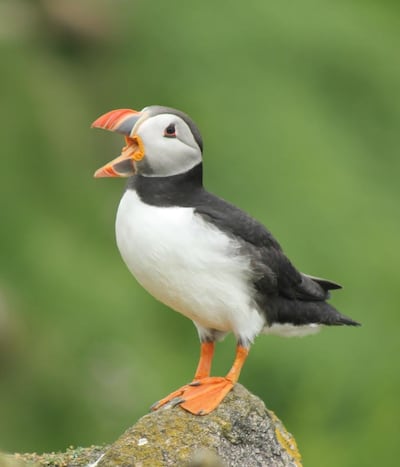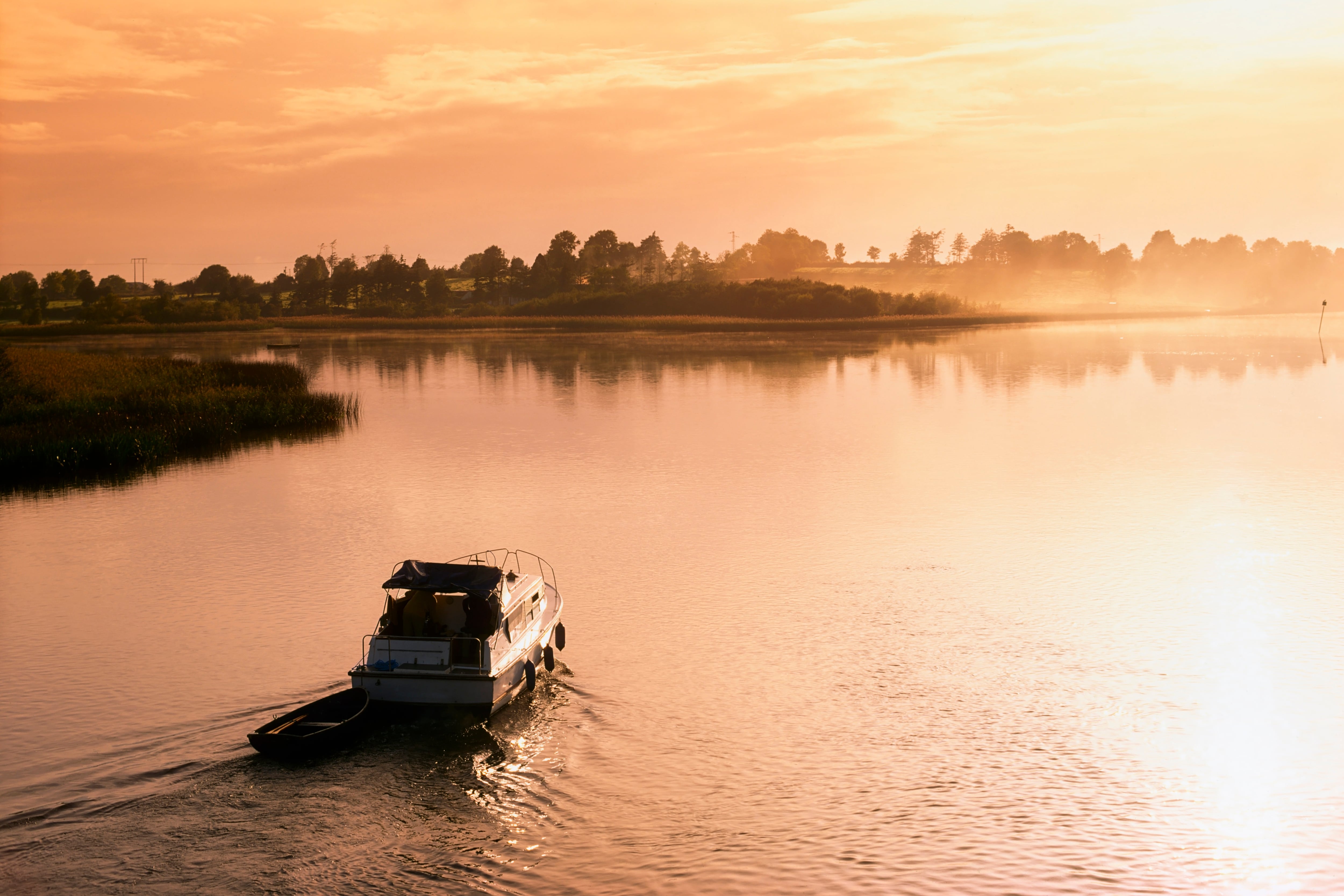A bit of good news: the number of puffins on the Saltee Islands off the Wexford coast has risen. After years of decline, it is quite a turnaround.
Each year, adult puffins return to the same below-ground burrow where they previously raised their young. Seven years ago, researchers visited the Great Saltee to see how the puffins were fairing and checked the burrows. They didn’t find one chick. The island population had all but collapsed to just 120 birds, a drop of 90 per cent in a few years.
The main culprit was quickly identified: the brown rat, which will rapidly scour the island for occupied burrows during breeding time and eat any eggs and chicks inside. Puffins mate for life and produce just one “puffling” chick a year. When the parents are away from the burrow, searching for oily fish to bring back to the chick, the contents of the unattended nests are easy prey for highly mobile predators such as rats.
Eradicating them became an obvious priority. In 2018, the National Parks & Wildlife Service committed about €84,000 of public money to poison them with rodenticide during the autumn and winter after the birds had left.
READ MORE
Monitoring work by University College Cork scientists – under the supervision of zoologist John Quinn – shows how the puffins have responded to life on the island without rats. Preliminary data from UCC student Teresa Cerdá Bermejo indicates that numbers are now up to 661. Because puffins live for up to 20 years and show extreme fidelity to their breeding sites, getting rid of predators is a crucial step if there’s hope of sustaining the population into the future.
This boost in numbers is fantastic. Until the early 1900s, people lived and farmed on the islands, with a significant portion of the Great Saltees under tillage, including barley and oats. Seabirds such as puffins were confined to the cliffs and slopes, but after the last human inhabitants left, many birds expanded their use of the available land. By 1931, just over 5,000 birds were found.
The breeding season for puffins is nearly at an end here, and they’ll soon be off to the North Atlantic for eight months, having shed their colourful beaks and moulted their wing feathers. A few years ago, UCC researchers fitted tracking devices and discovered that they are flightless for two months of the year: resting on the waves, they drink seawater and swim up to 60m underwater, using their feet as a rudder to steer them towards their prey.
Puffins face many problems, not least the twin pressures of human overfishing at sea and warming oceans, which have reduced the availability of small oily fish, such as sand eels and sprat, on which puffins depend.

Now that the rats on the Saltees have been successfully managed, is it time to deal with the most consequential pest of all: humans? Might we think about eradicating – or at the very least limiting – visitors to these islands during the breeding season to give puffins and other seabirds the greatest chance of success?
Ground and burrow-nesting seabirds are desperately vulnerable to human disturbance. Wandering around these sites can lead to catastrophic consequences. In 1992, picnickers disturbed a colony of roseate terns on the Azores; more than 200 nests were abandoned.
Thousands of people visit the Great Saltee each summer, and little information or direction is given on how they should behave around the birds while walking the island, where it is all too easy to sit on burrows and disturb the adults while feeding their chicks. There are few, if any, signs or barriers limiting where tourists can walk, nor are there any toilet facilities on the island.
Last year, UCC marine biology student Maeve Glynn spent the summer observing how breeding puffins responded to human disturbance and whether putting up temporary signs with messages such as “Please do not enter. Nesting puffins!” would change visitors’ behaviour.
Overall, Glynn noticed that most people responded well to the signs and stayed out. Those who didn’t were often photographers, who pose an increasing problem, especially given the more significant risks they’re willing to take in pursuit of a good shot (such as an adult with sand eels in their mouth, which means the photographer was near the nest during feeding time). Glynn once witnessed a young child telling a group of photographers who had ignored the signs that they were supposed to step back.
The Saltees have recently become part of a marine protected area, and the increase in puffin numbers will undoubtedly attract even more wildlife tourists, including photographers, to the island.
In 1992, the puffin’s global population was more than 10 million. Because of the multitude of pressures on them, this is projected to decrease by up to 79 per cent by 2065. They’ve responded well to life without rats; giving them space to breed without tourists watching their every move might be the next obvious step.













